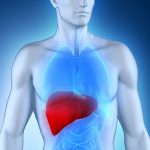
(HealthDay News) — There’s new research suggesting that a switch over to e-cigarettes can help cigarette smokers kick their habit — even if initially they didn’t intend to. The small British study of 40 people “found that vaping may support long-term smoking abstinence,” lead researcher Dr. Caitlin Notley, of Norwich Medical School, at the University of East Anglia, said in a university news release. Still, anti-smoking advocates in the United States stressed that vaping isn’t without its own hazards. First of all, prior research shows that ex-smokers who vape often return to tobacco cigarettes, said Dr. Len Horovitz, a lung specialist at Lenox Hill Hospital in New York City. And, “while there are certainly more harmful chemicals in cigarette smoke, there is a question of safety in e-cigarettes because of the presence of propylene glycol, and other as yet unidentified compounds,” Horovitz said. In the new study, Notley’s group asked 40 people who used e-cigarettes about their tobacco smoking history and prior attempts to quit smoking, and about their vaping habits. The investigation was funded by Cancer Research UK. According to Notley, the study revealed that vaping provides smokers with “many of the physical, psychological, social and cultural elements of cigarette smoking.” Beyond that, vapers described the activity as “pleasurable in its own right, as well as convenient and cheaper than smoking,” she said. “But… read on >





































